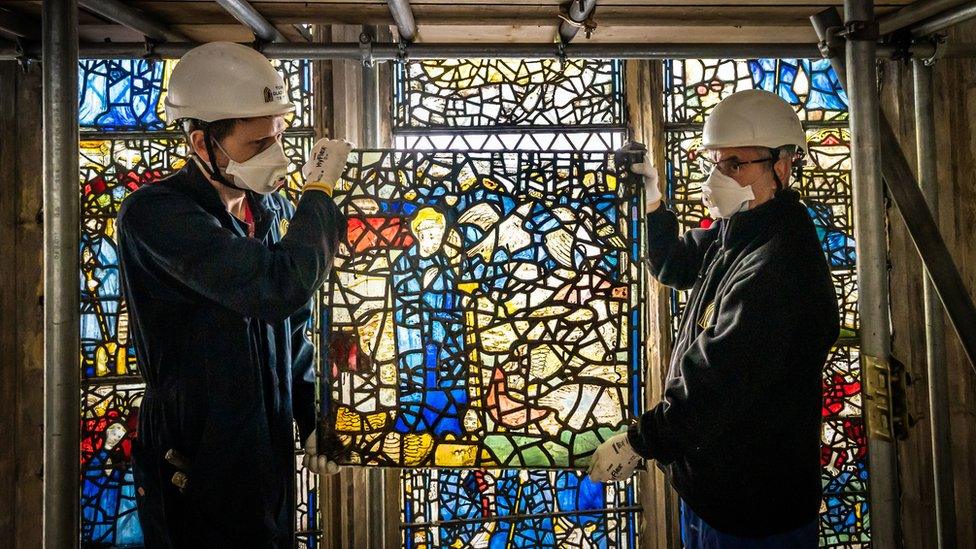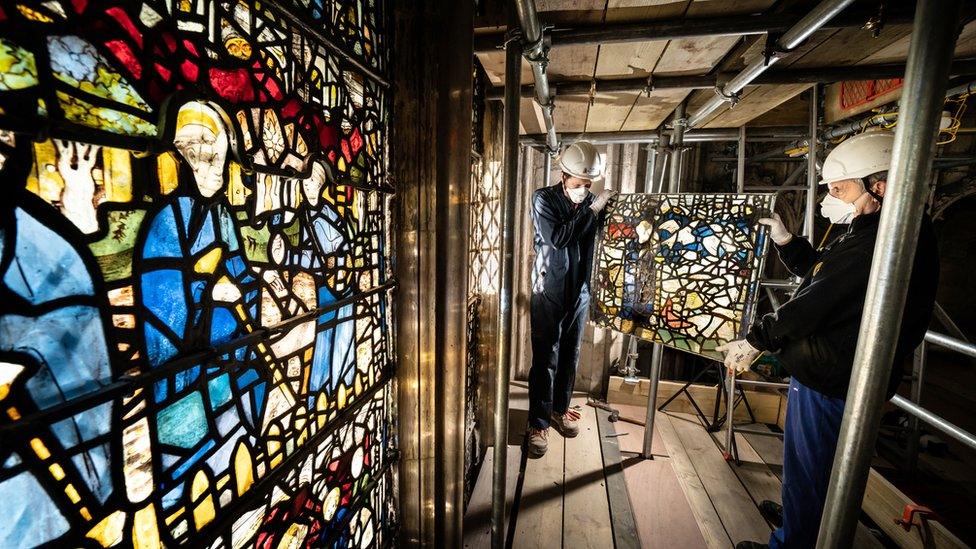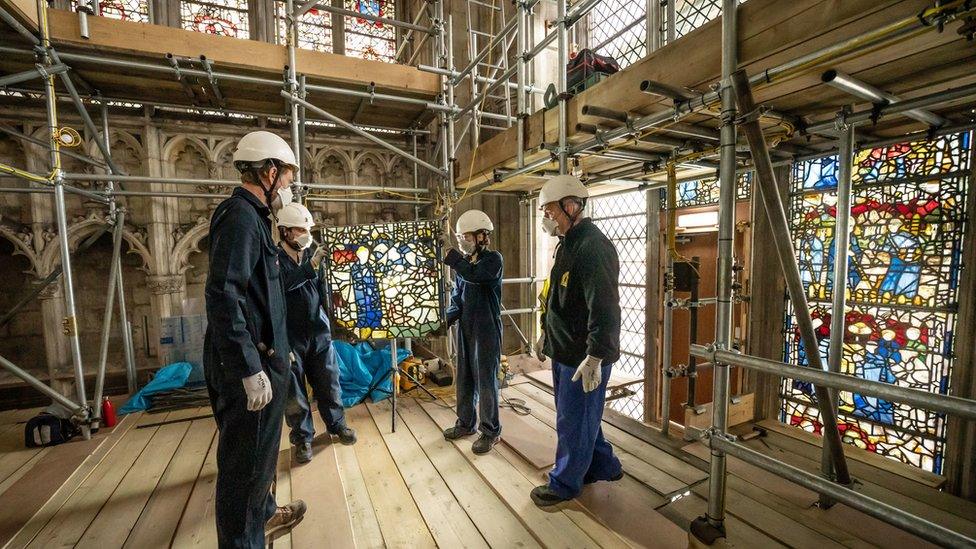York Minster: St Cuthbert Window conservation starts
- Published

The glass panels have been carefully removed by experts before being cleaned and repaired
A £5m project to conserve one of the largest surviving "narrative" stained glass windows in the world has begun.
York Minster's St Cuthbert Window dates from 1440 and tells the story of the life and miracles of one of northern England's most significant saints.
The 152 panes have suffered "centuries" of erosion and corrosion, experts at the minster said.
They are to be repaired using state-of-the-art protective glazing which is designed to last at least a century.

The entire window is made up of 152 panels telling the story of St Cuthbert
Experts are currently stabilising any cracked and broken glass and lead, before returning the window with a glazing to help keep the glass dry.
The project is the first piece of "serious conservation" since the immediate post-war period, according to specialists from York Glaziers Trust.

Who was St Cuthbert?
St Cuthbert was an Anglo-Saxon monk and bishop of Lindisfarne
He lived between 634 and 687 and was renowned for his good works and miracles
When the monks who lived on Lindisfarne fled Viking attacks in the 9th Century, they carried St Cuthbert with them in his coffin, eventually settling at Durham
The window was gifted to the Minster by Thomas Langley Bishop of Durham, who was a former Dean of York.
Source: York Minster, external

The panels are being removed as part of a five-year programme which will also see urgent work carried out to replace and repair eroded and decaying masonry surrounding the window in the minster's South East Transept.
Prof Sarah Brown, director of York Glaziers Trust, said: "We're also mending leads where we're able to, so parts of the narrative will be a great deal clearer. But I think it's generally the lightening of the whole window that will be the greatest benefit."

The panels are to be cleaned and repaired as part of a five-year programme
Alex McCallion, director of works and precinct at York Minster, said: "We're downwind of four coal-fired power stations so we're seeing the effect of centuries of erosion and corrosion."
"We work in 100-year scaffold cycles so there won't be scaffolding up here for another 100 years. We will leave stone on the building that we think has 100 years left in it," he added.

Follow BBC Yorkshire on Facebook, external, Twitter, external and Instagram, external. Send your story ideas to yorkslincs.news@bbc.co.uk, external.
Related topics
- Published22 May 2021

- Published5 March 2021
